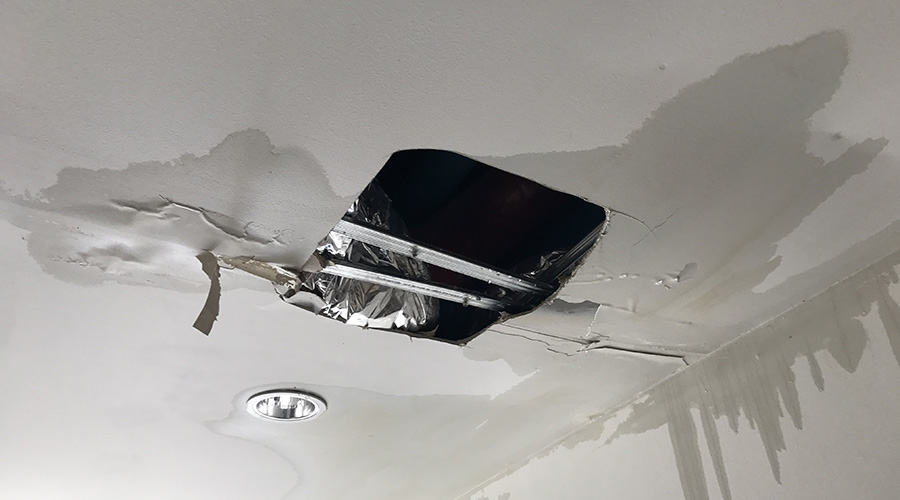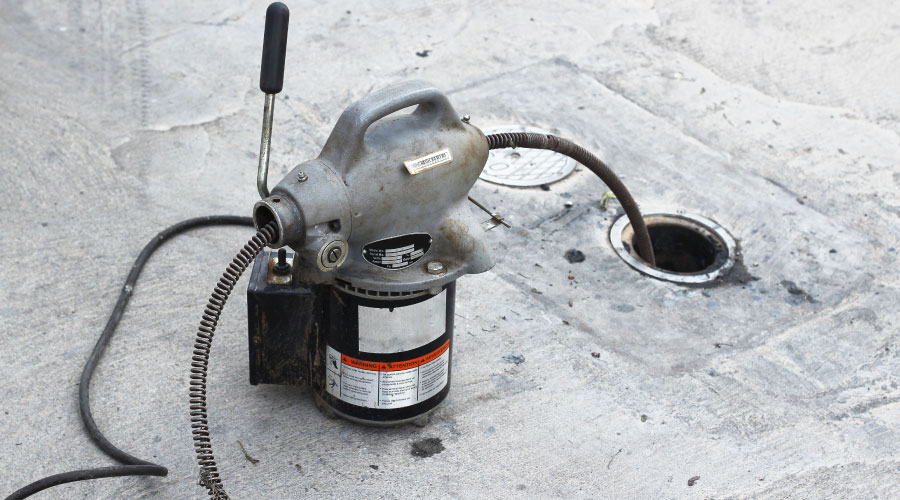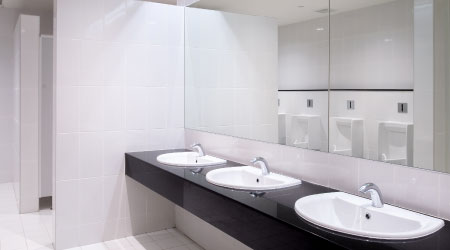Public Health Worries Shape Restroom Choices
Facility executives can turn to improved technology and a wider array of options to address costs and water efficiency as well as hygiene concerns
As public health issues make headlines with increasing frequency, building occupants want assurance they won’t catch the latest bug simply by using the bathroom. Thorough cleaning should be part of any janitorial routine, but often it’s not enough to make users feel they are in a sanitary environment. Restroom patrons have been known to go to extraordinary lengths not to touch things, including kicking at the toilet flush handle.
Facility executives are confronted with the challenge to improve the cleanliness of restrooms without increasing costs.
Innovations in restroom fixture and accessory design — particularly with regard to touchless technologies — offer one way to address that challenge. Restroom patrons can use the toilet, wash their hands, leave the room and hardly touch a thing.
“These changes were market driven,” says Jim Allen, water conservation manager for Sloan Valve Co. “These technologies increase hygiene and minimize cross contamination.”
Touchless technologies first found favor in high-volume facilities such as airports and convention centers. Now they are migrating to smaller washrooms, says Alan Gettelman, director of marketing for Bobrick Washroom Equipment.
This isn’t the first time public health issues in the workplace have driven the development of new products. Public health was the very reason the disposable paper cup was invented, says Jeff Carlton, senior market development manger for Georgia-Pacific’s North American Commercial Products. People in the workplace often had to share cups and glasses, passing germs from worker to worker. The disposable cup helped to improve workplace hygiene.
“I see the same kind of concern happening with the public washroom,” he says. “People are more aware than ever of touch points. As a result, touchless has become responsible for the development of new technologies hitting the marketplace.”
These changes are motivated in part by the personal nature of restrooms.
“Never underestimate the impact of the restroom,” says Doug Sutton, director of marketing for Kimberly Clark Professional. “The touchless concept is based on the significant amount of emotional issues that users have around bathroom experiences.”
Sutton says his company has undertaken a great deal of research to determine how people feel about the restroom experience. “The emotional response is generally underappreciated by the facility executive,” he says.
According to Sutton, four out of five building complaints center around the restroom. On average, people go to the restroom three to four times a day, he says. “Facility executives need to understand restroom issues.”
Sutton says his company sent observers into a restroom to watch how patrons behave. “Forty percent of all men don’t wash their hands after they urinate,” he says. “And roughly the same numbers don’t flush when flushing is required. Nothing contributes more to perception of unclean restrooms than an unflushed urinal. It’s one of the reasons that have led facility executives to invest in auto-flush technology.”
Poor flushing habits also are driving the installation of urinals that don’t use water, which eliminate flushing altogether, says Klaus Reichardt, managing partner for Waterless Co.
“You don’t have to touch the flush valve,” he says. “Waterless, no-flush urinals bring to the table a whole new category of touchless products.”
Urinals that don’t use water also reduce the amount of moisture in the restroom, which reduces the opportunity for mold, mildew and bacteria to grow, Reichardt says. And with no moving parts, urinals that don’t use water reduce maintenance and vandalism, says Jay Troger, president of Falcon Waterfree Technologies’ U.S. division.
“People say, ‘I believe that waterless urinals save water, but aren’t they disgusting?’ Actually, no,” Troger says. “They’re much more sanitary. It has been proven that the flush plume sends up a spray of water which puts bacteria all over the bathroom.”
Women vs. Men
Hygiene and functional concerns extend to the women’s restrooms.
Women have been known to kick handles to make the toilet flush. Kicking increases the likelihood the handle will break.
“With touchless toilets, you don’t have to change the handles, resulting in decreased maintenance,” says Susan Kennedy, director of marketing for Sloan Valve Co.
Despite the annoyance of changing flush handles on a regular basis, some facility executives seem reluctant to change out existing fixtures.
“The biggest concern that most facilities executives have in adopting hands-free technology is the retrofit process,” says Jerry McDermott, executive vice president of Technical Concepts. “Innovations in touchless technology have made it possible to install an automatic flusher without ripping out existing fixtures.”
Good hygiene dictates that people wash their hands after using the toilet. While turning on the faucet generally isn’t an issue, touching the fixture after hand washing is. Automated faucets reduce contamination worries.
Studies show that where hands-free washing stations are installed in schools, children are more likely to wash their hands more often, Allen says.
However, not all faucets are created equal, McDermott says. “The sensors are different, and the physical profiles are different and that can affect water flow.”
With early sensor technology, people had a difficult time activating the sensor. People would move their hands around under the faucet to get it to activate, and get frustrated, he says.
Design is one of the biggest challenges in hands-free washroom technology. Historically, commercial fixtures were built for durability while residential fixtures were designed more with aesthetics in mind, says John Dommissen, director of marketing and product development for Bradley Corp.
“There used to be clear distinctions between commercial and residential fixtures,” he says. “If you wanted the fixture to look good, you would go with a residential product. If you wanted the product to last, you would go with a commercial one.”
Now the trend is to make commercial fixtures as attractive as residential fixtures. “There is not only a great need for durability, but also a strong desire for design aesthetics,” says Dommissen.
Beyond Water Savings
Water conservation also figures heavily in restroom innovations, particularly in terms of implementing sensor technology.
“Facility executives have to be concerned about water conservation in this age,” says Michael Rosen, commercial product manager for Chicago Faucets. “Our uses of water have gone up, in general, while the supply has stayed the same. There is a lot of urban development in areas where there is not that much potable water.”
Water conservation technologies combined with touchless systems can be good public relations for many facilities.
“A lot of companies are concerned with how they are perceived,” Rosen says. “They want to be good corporate citizens.”
Paper products and dispensers are critical components of the touchless washroom concept. Electronic touchless dispensers quickly found a niche in health care settings, and their popularity has since spread to restaurants, stadiums, airports, schools and other public venues.
“Electronic towel dispensers are growing in popularity,” Sutton said. “They are driven by tenants.”
Touchless dispensers also represent an opportunity to save money and reduce waste. Paper product manufacturers have developed lines of dispensers that not only eliminate another touch point, but also allow facility executives to control the amount of product dispensed with each use.
For instance, most schools use single-fold towels piled in a dispenser. With those kinds of systems, users typically take two or three towels. Carlton says that’s a substantial amount of usage given the limited storage capacity of such systems.
Managers of Class A buildings have been reluctant to switch from folded towels to money-saving jumbo paper towel rolls because they come across as too industrial for professional environments. Touchless systems bridge the gap.
Electronic dispensers deliver paper towels in measured portions. At least one manufacturer offers a dispenser that controls the interval at which a new towel is dispensed. This type of dispenser can save up to 37 percent on folded towels. “The original intent of electronic dispensers was hygiene, but customers reported saving money,” Carlton says.
Sensor-operated electric hand dryers can eliminate paper towels altogether, said Rick Steffen, vice president of sales for World Dryer Corp. In the past, washroom patrons complained that electrical dryers took too long. Advances in hand dryer technology have improved output so that hands dry 50 percent faster, he says.
The no-touch phenomenon also is spreading to restroom accessories such as feminine hygiene dispensers and receptacles, Gettelman says.
Remaining Obstacles
Despite all the precautions, there is still one fixture that’s hard to avoid touching — the toilet seat. So far, the only options are paper and plastic seat covers. Seat covers have been available for decades, and if used correctly, most seat covers will flush down the toilet without the user touching them. The problem is availability. Not all facilities offer seat covers, Carlton says.
Gettelman adds that the acceptance of toilet seat covers seems driven by geography and culture. Seat covers are common in the west, but less available in the east.
There is one final obstacle to the touchless restroom.
“You’ve gotten from the toilet to the sink to drying your hands, all touch-free,” Carlton says. “Now you’ve got to get out the door.”
Some public facilities opt for a maze-like entry/exit that eliminates the door altogether. Others have installed electronic door openers. But for the most part, manual doors prevail.
Paper companies are working on paper door handle covers. The disposable covers would be located next to the door with easy access to a trash can. A patron pulls open the door and tosses the cover into a nearby trash can.
Facility executives can select from a variety of power technologies to implement a hands-free environment. Battery or hardwired systems are the most common; however, innovations range from solar-powered faucets to faucets that generate their own electricity.
For example, a solar-powered faucet can save both energy and water. The storage cell converts available light from any ambient source into electrical energy.
Few Tradeoffs
Facility executives who adopt touchless technologies are likely to find few negative tradeoffs while patrons will find none, restroom experts say.
“When performance is the issue, there can’t be tradeoffs,” says Lenora Campos, public relations manager for TOTO USA. “You can’t have products that do not perform. You don’t have to give up a little of this to reach a little of that.”
Others agree.
“The only downside is that you must adopt a little different thinking in terms of maintenance,” Gettelman says. “The janitorial staff has to watch for battery replacements and non-functioning devices and quickly change those things out.”
Overcoming Barriers
In the past, touchless technology had its shortcomings, particularly when tied to water conservation technologies. People were afraid that the automatic fixtures wouldn’t operate on cue or the low-flow features would be inadequate to clear the bowl.
“There was a huge psychological barrier that needed to be overcome,” Reichardt says. “People needed to be shown that the technology does work, that it offers cost savings and is efficient.”
Most automatic fixtures have manual overrides should the sensors fail to function properly, manufacturers say. That goes a long way toward relieving user anxiety.
Now the tradeoffs focus more on the upkeep and disposal associated with batteries. “That’s really not too much of a negative tradeoff, considering the benefit,” Allen says.
With advances in standard off-the-shelf alkaline batteries, most electronic sensors can operate for longer periods without running down.
“Batteries have gotten better, and the technology around sensors has gotten better, so it’s reasonable to expect a two- to three-year battery life,” McDermott says.
The bottom line in maintenance is the learning curve, says Nat Kogler, product manager for washroom fountains and electronics at Bradley.
“Facility executives ultimately have to keep the building going after it opens,” he says. “There is a whole new education process in maintenance strategies and in servicing new technologies.”
Lynn Proctor Windle, a contributing editor to Building Operating Management, is a freelance writer who has written extensively about real estate.
Related Topics:











